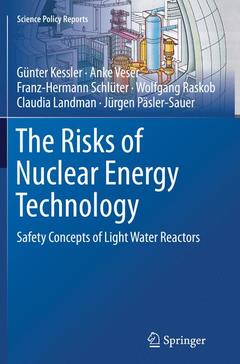Description
The Risks of Nuclear Energy Technology, 2014
Safety Concepts of Light Water Reactors
Science Policy Reports Series
Authors: Kessler Günter, Veser Anke, Schlüter Franz-Hermann, Raskob Wolfgang, Landman Claudia, Päsler-Sauer Jürgen
Language: English
Subjects for The Risks of Nuclear Energy Technology:
Approximative price 98.58 €
In Print (Delivery period: 15 days).
Add to cartPublication date: 08-2016
Support: Print on demand
Approximative price 105.49 €
In Print (Delivery period: 15 days).
Add to cartPublication date: 09-2014
364 p. · 15.5x23.5 cm · Hardback
Description
/li>Contents
/li>Comment
/li>
Analyses the risks of nuclear power stations
Discusses the security concept of reactors
Analyzes possible crash of air planes on a reactor containment
Presents measures against the spread of radioactivity after a severe accident
Written in engaging style for professionals and policy makers
Includes supplementary material: sn.pub/extras




